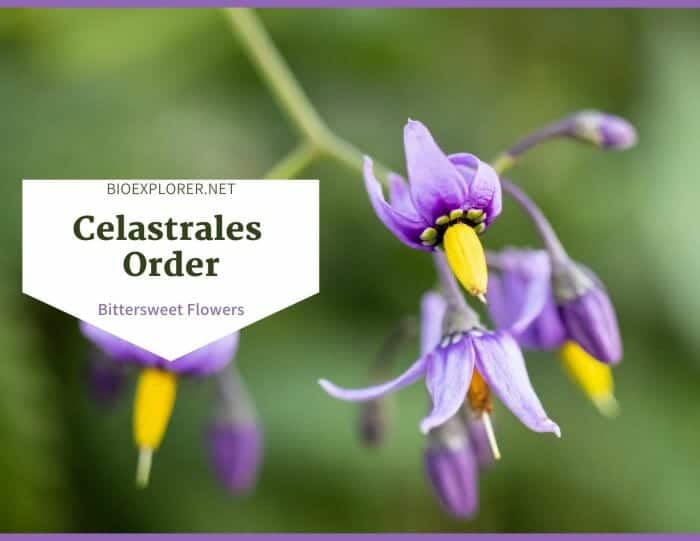
Celastrales are trees and shrubs mainly distributed throughout the tropics and subtropics. The leaves are usually alternate or opposite, simple, and stipulate. The flowers are usually small with visible nectary disks, and the seeds are often arillate or with arilloid structures.
Table of Contents
Celastrales Families
Beneficial species under Celastrales are the bittersweets, Christmasberry, and Korean spindle tree. Celastrales is a diverse order with 2 families, 94 genera, and 1355 species[1]. The 2009 classification placed 2 families under Celastrales from 3 families in the APG II classification in 2003. The families of Celastrales are:
- Celastraceae[2] (Bittersweet family)
- Lepidobotryaceae[3] (cedro caracolito family).
![]()
Celastrales Distribution
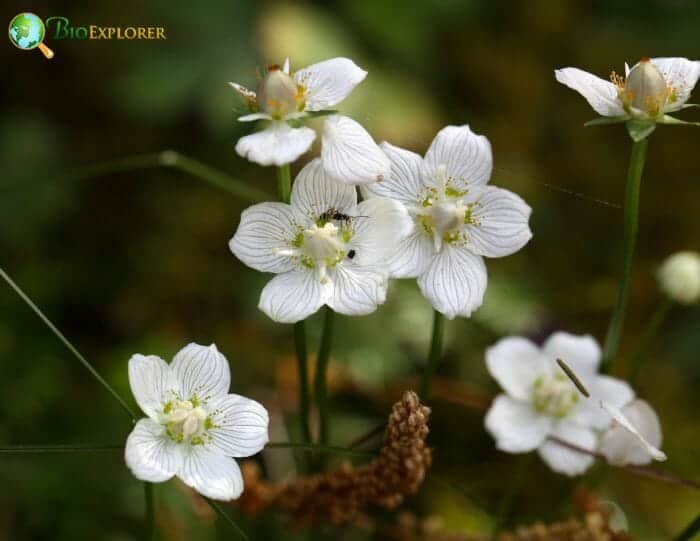
Celastrales members are primarily distributed throughout the tropics and subtropics. A few species of Celastrales are found in the temperate regions. The shrubs, trees, and lianas of Celastraceae (94 genera and 1, 410 species) are worldwide in distribution.
The Lepidobotryceae (2 genera and 2 species ) members are found in West Africa and Central and South America. Some of the species are scattered to Peru, including W. Amazon.
![]()
Celastrales Characteristics
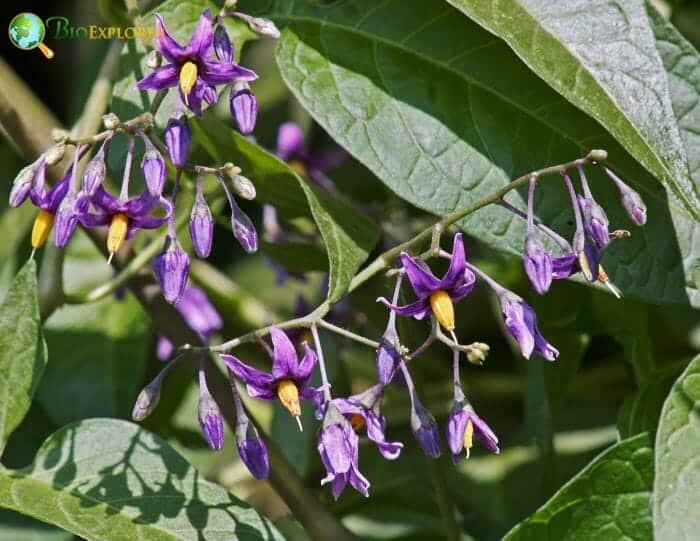
- Plant type: Members of the Celastrales are trees and shrubs.
- Stem: There are species with laticifers in stems.
- Leaves: The leaves of the Celastrales are usually alternate or opposite and usually simple, entire, with involute ptyxis. The leaves often have small, cauline, and caducous stipules. There is no leaf sheath.
- Flowers and inflorescences: The flowers have well-developed male and female parts but are often unisexual in function. The flowers can be solitary or in cymose, fasciculate, panicles, umbel, raceme-like, or compound thyrsoid.
- Sepals and petals: The sepals are usually 4-5. Other species have 2 or 6. Most flowers often have 4-5 petals.
- Stamens and carpels: The androecium of the flowers usually have 3-5 stamens. The connate antepetalous carpels are often 2-5. In rare cases, the pistil has more than 5 carpels.
- Ovary and fruit: Most ovaries of the flowers are superior. The fruit is a capsule, berry, drupe, samara, or achene-like.
- Seeds: The aril or arilloid structure is present or absent in seeds. The seed coat is usually exotegmic. The [css3_tooltip content=”An embryonic nutritive tissue formed during double fertilization by the fusion of a sperm with the polar nuclei.” Header=”What is endosperm?” position=’bottom’ tag=’a’ style=’style_49′ width=’300px’ custom_css_class=’qlabs_tooltip_style_jk_49 def12′]endosperm[/css3_tooltip] is present. The [css3_tooltip content=”A food reserve tissue found in the seeds of plants such as coffee, beets, or spinach. It is formed outside the embroyo sac.” Header=”What is perisperm?” position=’bottom’ tag=’a’ style=’style_49′ width=’300px’ custom_css_class=’qlabs_tooltip_style_jk_49 def11′]perisperm[/css3_tooltip] is not developed.
![]()
Celastrales Flowers and Reproduction
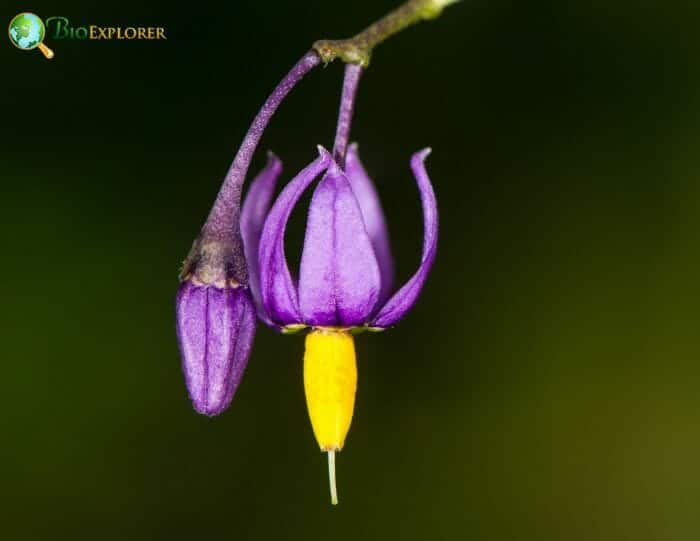
Most flowers of Celastrales are small with noticeable nectary disks. The Celastraceae flowers are usually small. Each flower usually has 5 sepals and 5 petals. The stamens arise from the nectary disk. These stamens are alternating with the petals. The Celastraceae plants are usually [css3_tooltip content=”An organism or structure possessing both male and femal reproductive organs; a flower with both stamens and pistils. Other synonyms: bisexual or monoclinous.” Header=”What is hermaphrodite?” position=’bottom’ tag=’a’ style=’style_49′ width=’300px’ custom_css_class=’qlabs_tooltip_style_jk_49 def35′]hermaphrodite[/css3_tooltip]. Some species are unisexual. Inflorescences are aggregated cymes or fascicles. Pollination of the flowers is via insects.
The American Bittersweet (Celastrus scandens[4] ) from the Celastraceae family has small and green, orange, or white flowers in a 6-inch long panicle. The star-shaped flowers have 4-5 petals. These flowers typically bloom from May to June. Some plants have perfect flowers, but most have separate male and female plants. There are 5 yellow stamens in the male flowers, while the female flowers have 5 sterile stamens and a thick style with a scalloped edge stigma on top.
The plants of Lepidobotryaceae are [css3_tooltip content=”Pertaining to plants, individuals of which bear either staminate or pistillate flowers, but not both.” Header=”What is dioecious?” position=’bottom’ tag=’a’ style=’style_49′ width=’300px’ custom_css_class=’qlabs_tooltip_style_jk_49 def18′]dioecious[/css3_tooltip]. The fertile flowers under this family are functionally male or functionally female. The flowers are [css3_tooltip content=”Possessing or bearing bracts.” Header=”What is bracteate?” position=’bottom’ tag=’a’ style=’style_49′ width=’300px’ custom_css_class=’qlabs_tooltip_style_jk_49 def41′]bracteate[/css3_tooltip], regular, and aggregated in racemes. There are distinct [css3_tooltip content=”A collective term referring to the petals of a flower.” Header=”What is corolla?” position=’bottom’ tag=’a’ style=’style_49′ width=’300px’ custom_css_class=’qlabs_tooltip_style_jk_49 def3′]corolla[/css3_tooltip] and [css3_tooltip content=”A collective term for all the sepals of a flower; the lowermost whorl of floral orgrans (Plural form is calyces).” Header=”What is calyx?” position=’bottom’ tag=’a’ style=’style_49′ width=’300px’ custom_css_class=’qlabs_tooltip_style_jk_49 def2′]calyx[/css3_tooltip] in the perianth. The two-whorled perianth comprises 5 sepals (1 whorl) and 5 [css3_tooltip content=”overlap or cause to overlap; in botany terms, scales, sepals, or plates having adjacent edges overlapping; with margins of structures overlapping like shingles on a roof.” Header=”What is imbricate?” position=’bottom’ tag=’a’ style=’style_49′ width=’300px’ custom_css_class=’qlabs_tooltip_style_jk_49 def31′]imbricate[/css3_tooltip] and sessile petals (1 whorl). The sepals and petals of the flowers are free. The nectary disk is present.
![]()
Celastrales Family Differences
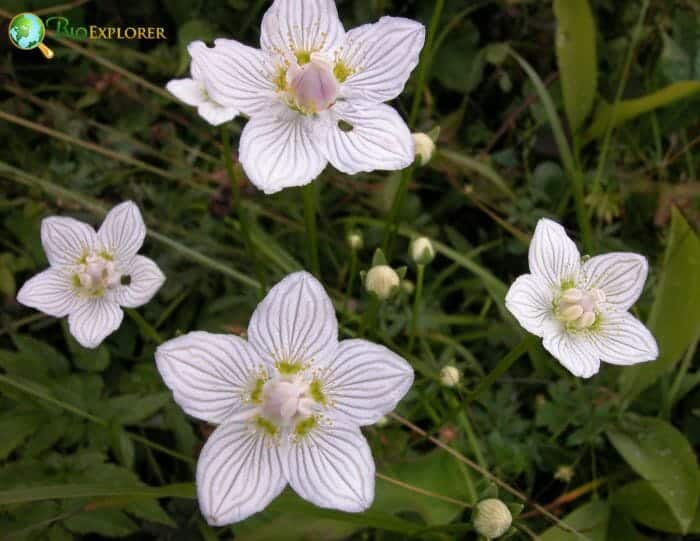
Celastraceae
- Members of Celastraceae are shrubs. Most plants have laticifers in stems or in leaves and stems.
- A single plant of Celastraceae has opposite or spiral leaves. Some species have two-ranked leaves. The leaves stipulate; often fringed. The lamina is entire. The lamina margins often have minute teeth.
- The flowers are mostly bisexual. A few species are unisexual. The flowers are in cymes or fascicles.
- The perianth part is two-whorled with 4-5 sepals and 4-5 petals.
- The androecial members are free and isomerous with the perianth; 3-5. The gynoecium has 2-5 carpels.
- Most ovaries are superior, and a few are partly inferior. The fruit is a capsule, berry, drupe, samara, or achene-like.
- The seeds are usually endospermic. If the endosperm is present, it is oily.
![]()
Lepidobotryaceae
- The two genera of the Lepidobotryaceae are trees.
- The leaves of the plants are alternate and in two arrows along the stem. The leaves are unifoliate, stipulate (and stipellate), and petiolate. The lamina and lamina margins are entire.
- The members are dioecious, and the small inflorescences are found opposite the leaves.
- The perianth has distinct corolla and calyx with 5 sepals and 5 petals.
- There are 10 stamens; free of the perianth. The carpels are 3, and the gynoecium is [css3_tooltip content=”Flowering having united carpels; Contrast apocarpous.” Header=”What is syncarpous?” position=’bottom’ tag=’a’ style=’style_49′ width=’300px’ custom_css_class=’qlabs_tooltip_style_jk_49 def10′]syncarpous[/css3_tooltip].
- The ovary is superior, and the fruit is a capsule.
- The fruit is one-seeded. The seeds of Lepidobotryceae are endospermic; without starch.
![]()
Celastrales Example Species
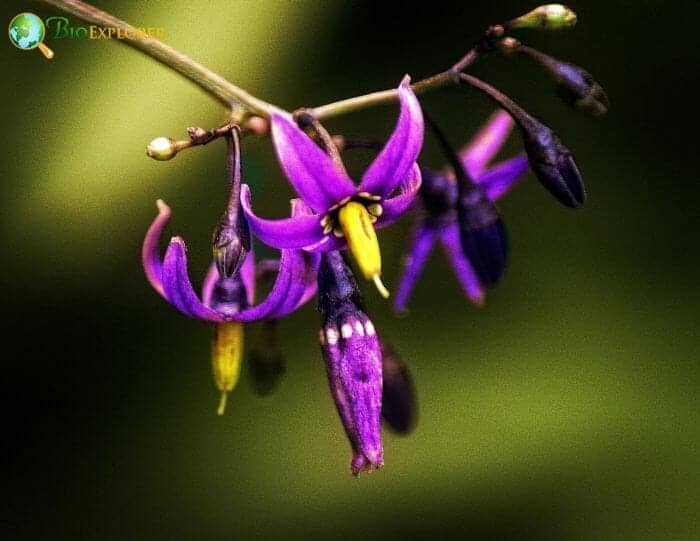
Celastrales is a diverse order, with most species placed under the Celastraceae family. The species below are some of the example species under Celastrales.
- Asian bittersweet[5] – It is a fast-growing weed that threatens other plants. However, it also has benefits. The young leaves are edible. The roots, stems, and leaves are used in traditional medicine.[6].
- Black oil plant[7] – The seeds of the C. paniculatus offer promising benefits for cognitive functioning and improving intestinal health[8].
- Christmasberry[9] – The Christmasberry plant is commonly used for landscaping.
- Eastern wahoo[10] – The Eastern wahoo is used for landscaping, informal hedge, or screen.
- Korean spindle tree[11] – The young leaves are edible when boiled. Korean spindle tree has medicinal use in gynecological issues.[12].
- Marsh grass of Parnassus[13] – The plant is planted in the garden. It also has value[14] in traditional medicine.
- False-spike thorn[15] – The plant is commonly used in the garden as a barrier, boundary, or hedge.
- American bittersweet – All parts of the American bittersweet are toxic. However, the root, bark, and leaves are medicinal.[16].
- Lepidobotrys staudtii
- Ruptiliocarpon caracolito – The wood of the tree is suitable for cabinetry.
![]()










